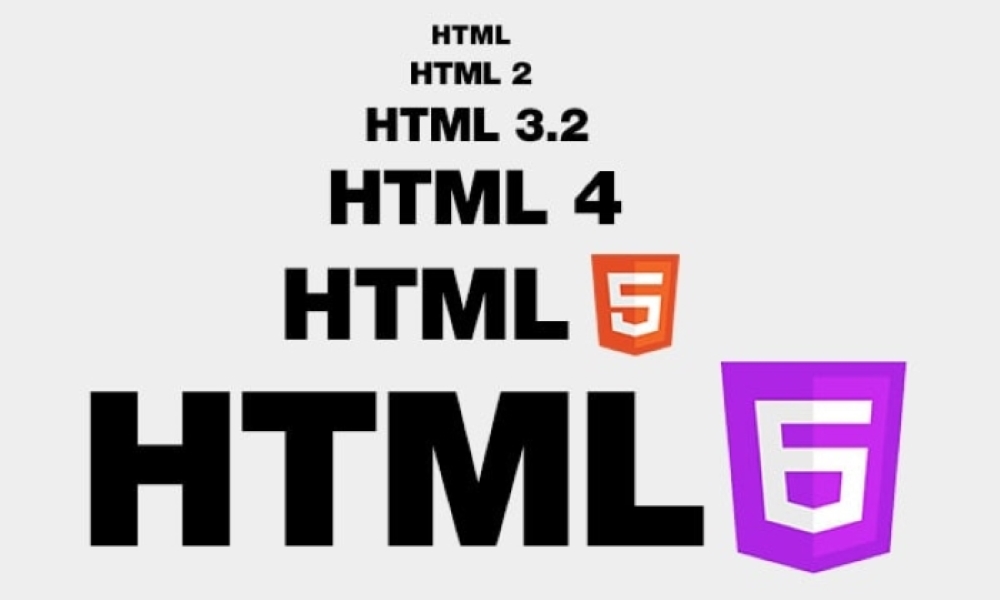In the ever-evolving landscape of web improvement, staying up to date with modern technologies and requirements is vital. HTML, the cornerstone of internet layout, has seen numerous iterations since its inception. The World Wide Web Consortium (W3C) and the Web Hypertext Application Technology Working Group (WHATWG) have been at the forefront of developing HTML requirements. But what’s the latest on the HTML front? Is HTML6 on the horizon? In this blog post, we’re going to discover HTML6, what it means for net builders, and when we will count on its arrival.
Introduction of HTML6:
Welcome to the sector of internet improvement, where alternatives are the best. As the digital panorama continues to evolve, net requirements like HTML play a pivotal function in shaping the way websites and net applications are designed and evolved. In this weblog publish, we can explore the exciting global of HTML6 – the next generation of the Hypertext Markup Language. We’ll also take a closer look at the Web Hypertext Application Technology Working Group (WHATWG) and its iterative technique for HTML updates.
The History of HTML:
To apprehend the importance of HTML 6, let’s take a short ride down memory lane. HTML, or Hypertext Markup Language, has had numerous versions since its inception. From HTML2 to HTML4, every generation introduced new factors and features that progressed the competencies of the net. HTML5, the most recent principal release, has been the backbone of present-day web development. It delivered features like video and audio factors, advanced shape coping, and the canvas element, making it a game-changer for web designers and builders.
HTML5: The Current Standard
HTML5 is more than only popular; it’s the foundation of the net as we realize it these days. Its progressed semantic elements have made it less complicated for developers to create based and accessible web content material. The integration of multimedia functions has enriched the internet experience, whilst better form dealing with more desirable consumer interactions.

Web developers have embraced HTML5, making the most of its competencies in growing responsive and interactive web applications. However, the technology international by no means stands nevertheless, and that’s where HTML6 comes into the photograph.
WHATWG’s Approach to HTML Development
WHATWG, the Web Hypertext Application Technology Working Group, is a key participant in the improvement of HTML requirements. Unlike the traditional approach of growing a single monolithic model of HTML, WHATWG emphasizes an iterative approach. This way instead of expecting a prime launch, internet standards are continuously updated. This approach maintains internet technologies current and aware of industry needs.
By specializing in incremental updates, WHATWG guarantees that net developers can take advantage of the latest capabilities and enhancements as quickly as they are equipped. This iterative technique has severa advantages, as it allows developers to conform to the ever-converting needs of the net without the disruption that main model modifications can convey.
HTML6: What to Expect
HTML6 holds the promise of interesting new capabilities and upgrades. While no official specification exists at the time of writing, there are speculations and discussions inside the net improvement community about what HTML 6 may convey to the table. Potential capabilities encompass:
- Enhanced assist for virtual and augmented truth content: With the developing hobby in virtual and augmented fact, HTML6 may additionally provide a superior guide for developing immersive web reviews.
- Improved accessibility functions: Web accessibility is an important subject, and HTML 6 makes it possible to introduce new functions and factors to make the Internet greater inclusive, reaping rewards for all users.
- Advanced features for multimedia: Expect HTML 6 to push the boundaries of multimedia integration, taking into consideration even greater interactive and tasty internet content.
- Streamlined APIs: HTML6 should include simplified and extra powerful APIs, making it less complicated for developers to create function-wealthy programs.
- Enhanced security features: With the ever-given chance of online attacks, HTML 6 may additionally introduce stronger security measures to defend each user and website.
It’s important to observe that these capabilities are nonetheless in the realm of possibilities, and the very last specification can also vary. However, the chance of those improvements makes HTML 6 a topic worth keeping an eye on.
Release Timeline and Progress
As of now, WHATWG has not launched a respectable roadmap for HTML6. The development of HTML standards is an ongoing technique, and the timeline for each iteration can vary. However, it’s safe to mention that net developers can expect HTML 6 to be part of the destiny of internet development.
To live informed about the development and potential launch of HTML 6, it is an awesome idea to comply with WHATWG’s legit bulletins and enroll in internet development information sources. Being proactive in monitoring updates can assist builders in preparing for the transition to HTML 6 when it arrives.
Additional Tips:
So, how can internet developers prepare for the arrival of HTML6? The key is to live knowledgeable and be adaptable. Here are some steps to recall:
- Stay up to date: Continuously screen WHATWG’s bulletins and developments associated with HTML 6. Web improvement blogs and forums are precious assets of data. Additionally, do not forget to follow key figures within the internet development network on social media platforms to stay inside the loop with the trendy updates.
- Experiment and analyze: Familiarize yourself with new capabilities and concepts that HTML 6 may introduce. You can test with emerging technologies and recognize how they match your improvement workflow. Building small projects or prototypes the use of proposed HTML 6 features can be a notable way to benefit hands-on experience.
- Test your code: As HTML6 evolves, check your current codebase to ensure compatibility. Make the vital updates and modifications to ensure a clean transition. Tools like validators and linters can help discover regions on your code that can want attention when migrating to HTML 6.
- Embrace alternate: Be open to adopting new features and practices that HTML 6 might bring. One of the important developments of successful internet developers is adaptability. Embracing exchange is vital for staying at the forefront of net development. Attend net development meetings and webinars to gain insights into fine practices for adopting new technologies.

- Share know-how: Engage with the net improvement community to trade insights and best practices. Collaboration and sharing of knowledge can decorate your expertise in HTML6 and its implications. Consider contributing to open-supply projects that might be experimenting with HTML 6 capabilities. Sharing your information and reviews can benefit both you and the network.
- Networking and collaboration: Connect with fellow developers and participate in online or local internet development meetups. Engaging in discussions and taking part in projects can divulge you to diverse perspectives and modern processes. Collaboration can result in higher problem-fixing and deeper expertise in HTML 6’s potential.
- Continuous mastering: Web improvement is an area that continuously evolves. Consider enrolling in online courses, tutorials, or workshops to sharpen your competencies. Platforms like Coursera, edX, and Udemy provide an extensive variety of guides that cover modern-day net technology.
- Documentation and sources: Keep a handy reference of authentic documentation and assets associated with HTML 6. The WHATWG internet site is a primary source for updates and specs. Having a brief admission to this information may be valuable as you figure out HTML 6.
Conclusion:
In the world of net improvement, the exchange is the most effective steady, and HTML6 is the next evolution in this ever-evolving panorama. While the authentic release timeline remains unsure, the iterative technique of WHATWG ensures that web developers will benefit from incremental updates to the HTML widespread.
As HTML 6 continues to take form, internet builders have to live informed, adapt to new features, and be prepared to embrace the adjustments it brings. By doing so, we can contribute to the boom and improvement of the web, ensuring that it remains an innovative and accessible platform for all.
In the end, HTML 6 holds the promise of a brighter, extra feature-rich destiny for internet development. So, maintain your eyes on the horizon, due to the fact the following chapter inside the HTML saga is simply around the nook, and it’s bound to be an interesting one.
FAQs:
Q1: What is HTML6, and why is it crucial?
A1: HTML6 is the next iteration of the Hypertext Markup Language, a crucial feature in web development. It’s crucial because it introduces new features, improvements, and upgrades, keeping the web relevant and competitive. Web developers need to stay updated with HTML 6 to create current, characteristic-rich net programs.
Q2: When are we able to assume HTML 6 to be formally released?
A2: At the time of writing, there may be no reputable release date for HTML 6. The improvement manner for net standards is ongoing and might range in phrases of timelines. Staying knowledgeable about announcements from agencies like WHATWG and web improvement information resources is a pleasant way to keep track of its development.
Q3: What are the blessings of WHATWG’s iterative method for HTML improvement?
A3: WHATWG’s iterative approach permits continuous updates and enhancements to HTML requirements, in preference to anticipating principal releases. This approach benefits web developers ensuring they can use new capabilities and enhancements as soon as they are geared up, without sizable disruptions.
Q4: How can I prepare for HTML6 as a web developer?
A4: Preparing for HTML6 includes staying informed, experimenting with new features, checking out your code for compatibility, embracing change, and sharing knowledge within the net development network. Consider enrolling in courses, attending net development meetings, and networking with fellow builders to benefit from insights and capabilities.
Q5: What are some resources for staying updated on HTML 6?
A5: To stay informed approximately HTML 6, you may:
- Monitor WHATWG’s respectable announcements.
- Subscribe to internet development information websites and blogs.
- Follow key figures and groups on social media.
- Participate in internet development boards and communities.
Q6: Are there any main adjustments anticipated in HTML 6?

A6: While there aren’t any legit specifications yet, a few predicted changes in HTML 6 encompass more desirable support for digital and augmented reality content material, progressed accessibility features, superior multimedia functions, streamlined APIs, and more advantageous safety features. Keep in mind that these features are speculative and may evolve as HTML 6 improvement progresses.
Q7: Is it important to emigrate current web tasks to HTML 6 while it is released?
A7: The necessity of migrating present initiatives to HTML 6 will rely on the specific capabilities and modifications introduced in HTML 6. For a few tasks, transitioning may be beneficial, while for others, it won’t be straight away required. It’s important to assess the impact of HTML6 on your tasks and make migration choices as a consequence.
Read More: Star Wars Battlefront 2 2005: The Ultimate Video Game Experience

